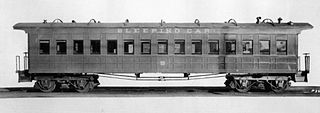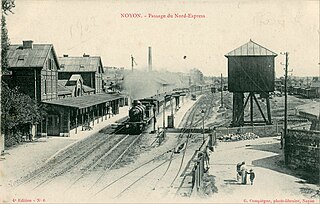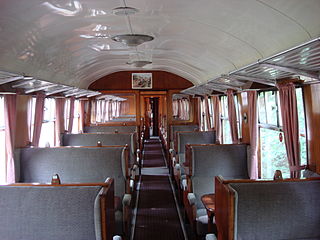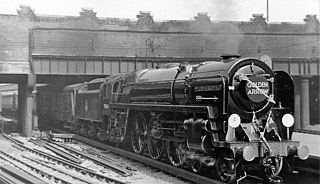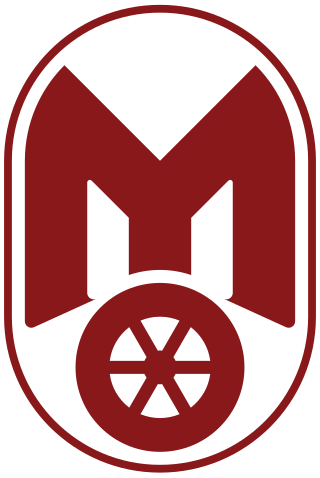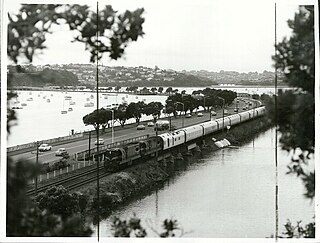History

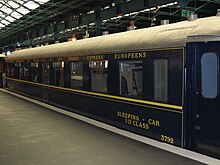




The Night Ferry was introduced on the night of 14 October 1936. The train was operated by Compagnie Internationale des Wagons-Lits (CIWL) until 1 January 1977, when it was taken over by British Rail. Motive power was provided by the Southern Railway and later British Railways in England, SNCF in France and from 1957, by SNCB in Belgium. [1]
When loaded onto the train ferry the train was split into sections and loaded equally on tracks on the port and starboard sides of the ship, to maintain its balance. It normally departed from and arrived at platform 2 at London Victoria where customs checks were performed. [1]
The first class sleeping cars and the baggage vans travelled the entire journey. The English train from London Victoria to Dover, and the French train from Dunkirk to Paris Gare du Nord, conveyed normal second class carriages of their own railway. The passengers travelling by these walked on and off the ship in the standard way. The English train conveyed one of a pair of standard Mark 1 Brake Composite carriages, which had been modified with a French-style gangway connection at one end. This provided the guard's compartment in England and enabled the guard to walk through the train. [1]
From November 1936, a Pullman Car Company dining carriage was added for the serving of supper and breakfast, operated between Victoria and Dover. Following British Railways taking over the Southern Railway, but not Pullman, a British Rail carriage took over the restaurant duties from January 1948, although still crewed by Pullman, until 1962 when Pullman was merged into British Transport Hotel and Catering Services. In France, a dining carriage was attached, initially a 1926 carriage built by the Birmingham Railway Carriage & Wagon Company. [1]
After ceasing with the onset of World War II in September 1939, services resumed on 15 December 1947. From 2 June 1957, a through coach to and from Brussels was attached/detached at Lille. In the winter seasons of 1967/68 and 1968/69, a daily through coach to and from Basel, Switzerland was added, where onward connections to skiing resorts were provided. [1] [2]
Following electrification of the South Eastern Main Line between Sevenoaks and Dover Marine in 1961, [3] the train was usually hauled within England by Class 71 electric locomotives. In its final years Class 33 diesels or Class 73 electro-diesels were often used. [1]
Until the Eurostar service began on 14 November 1994, the Night Ferry had been the only through passenger train between the United Kingdom and continental Europe. The carriages of the daytime Golden Arrow train did not cross the English Channel. [1]
Plans to build the Channel Tunnel were scrapped in the 1970s on cost grounds. This gave the Night Ferry a short reprieve; a tunnel would have inevitably led to the end of conveying passenger carriages by train ferry. [1]
By the 1970s the carriages were dated and in need of replacement. They were not air-conditioned, and during the ship voyage, while inside the ship, they became notably hot in summer. This was exacerbated by the chaining of the vehicles to the ship's deck, an activity underneath the sleeping compartments which inevitably woke most passengers up during the middle of the night. The carriages were over 40 years old, and by some margin were the oldest passenger vehicles running on the British network. [1]
From 1 January 1977, British Rail took over the operation of the train from CIWL. SNCF purchased the seven 1950s-built sleepers while others were leased from CIWL with some repainted in standard SNCF blue sleeper car livery including the SNCF logo and a prominent white stripe along the bodyside. Consideration was given to using British Rail Mark 1 sleeper carriages built in the late 1950s, but these too were dated and the idea was never adopted. The Night Ferry platform and trains as they were in 1974 featured towards the end of the final Steptoe & Son episode, the 1974 Christmas special. [4] The Night Ferry was also used in part during the 1976 Children's Film Foundation drama Night Ferry. [1]
Competition from air services also affected the train. The Night Ferry was withdrawn on 31 October 1980. [5] [6]
